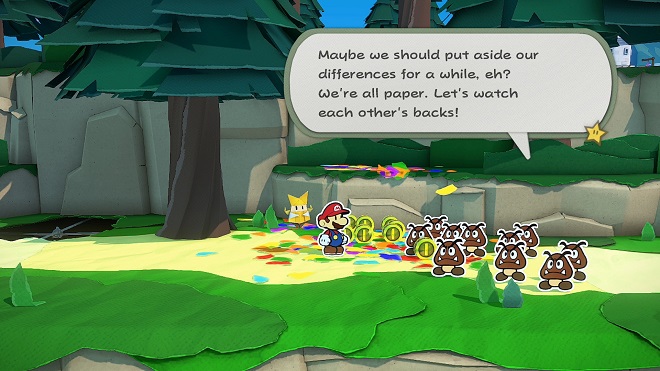Quarantine Control #7: If You Give a Psycho a Contagious Virus

Economies around the world are slowly but steadily reopening despite the COVID-19 pandemic still surrounding us, and before a vaccine is ready. But note the word “slowly,” which applies to most territories. Sheltering in place whenever possible remains the wisest course of action, and keeping yourself busy at home so as to not lose your mine. The writers here are wise enough to occupy that time with entertainment like watching TV shows and movies and playing video games. This means the Quarantine Control feature will continue for a while, because we enjoy having an opportunity to share what we’re doing.
It’s true that several parts of the world, especially in the United States, are foolishly reopening in too quick a fashion, which could risk spreading the disease again. But hopefully most people within those states are avoiding crowds and entertaining themselves with other matters (including, you know, by reading this feature) instead of pretending nothing’s happening like their leaders, who are being encouraged by an even bigger leader with a large pulpit.
Geoffrey Barnes
A few weeks ago, I discussed how I had trouble suspending disbelief while watching some TV series episodes and movies during the pandemic. This might sound silly, but I appeared to miss seeing crowds and the act of merely talking to other people who didn’t live in the same household in real life, even though I didn’t spend much time doing that when things were “normal.” The answer to this was, clearly, to watch something that takes place during a fictional-but-too-real pandemic. After doing it, I’m not sure that was the best idea, but I don’t regret it.
Contagion (2011)
Source: HBO on Demand
It’s a movie
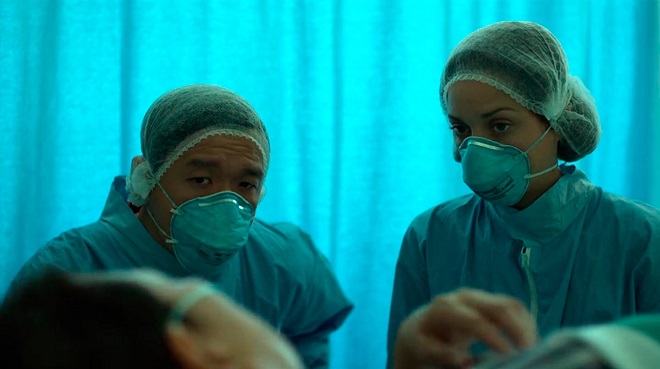
Contagion has received credit for nearly and frighteningly predicting the current pandemic we’re going through, a 2011-released movie that also deals with a virus spreading faster than health officials can contain it. The movie focuses on several characters all played by big-name actors, including a family featuring Matt Damon and Gwyneth Paltrow as a husband-and-wife couple, a nurse played by Kate Winslet (using an American accent, notably), Laurence Fishburne as a doctor studying the disease, and even Jude Law as a blogger. Not all of them make it out of this alive, with the virus having a high-death rate.
The parallels in Contagion to the real world now really are that eerie. There are searches for patient zero to stop the virus, this one being known as MEV-1, from spreading too quickly, which ends as well as you might think. Others have to self-quarantine after interacting with someone who’s tested positive for the virus. There are even conspiracy theories about Big Pharma hiding the real vaccine, and others spreading misinformation regarding how contagious it is or isn’t. Not to say it’s entirely similar to our pandemic: MEV-1 has a far higher death rate than COVID-19’s (from what we know, anyway), and there’s unfortunately no focus on people defying orders to stay at home in rallies to reopen territories and countries. Several people do take monumentally stupid actions, however.
On the other hand, there are parts of the movie I’m desperately hoping won’t come to pass, pertaining to how violent things could get. We’ve struggled with supplies for items here for at least a short time, including a lack of toilet paper and paper towel packages in some stores and scant hand sanitizer bottles, thanks to the virus impacting production and supply lines. But the struggle for them largely hasn’t become too violent, at least not yet — and hopefully it never does. Not to mention questions about who will get the vaccine first when it arrives, which has the potential to be worse than how it goes in the film depending on who will be in charge in the US come 2021. This is depressing to even think or write about.
Contagion is far from the most comforting movie to watch at the moment, but it’s relatable enough that I highly recommend giving it a look. It’s worth being amazed at how prescient movies can sometimes be. Let’s just cross our fingers and hope some of the worst stuff seen in the movie doesn’t come to pass, even though it may be futile given how 2020 has provided the worst of everything.
On the flip side…
Star Wars: The Clone Wars — Season 1 (2008)
Source: Disney+
Episodes: The Pilot Movie and first 22 episodes
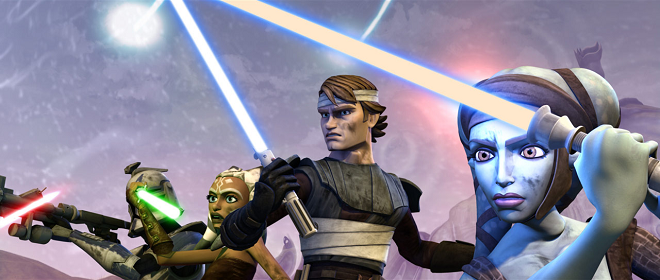
After hearing about how good the Star Wars: The Clone Wars animated series was for years, and thoroughly enjoying Star Wars Rebels, I finally started watching the show on Disney+. The good-looking and also-well-received final season recently airing on the streaming service didn’t hurt here. The concept of watching further exploits of Anakin Skywalker and a younger Obi-Wan Kenobi didn’t sound all that enticing after some story and writing misfires in Attack of the Clones and Revenge of the Sith. Now that I’ve started it, though, I’m glad I finally jumped in.
To be fair, Clone Wars isn’t all that enticing at the start. The pilot movie and around the first one-third of the first season inherit the goofier tone established in The Phantom Menace, with droids cracking plenty of jokes and wacky hijinks from Jar Jar Binks (who I don’t hate despite vocal fans still becoming enraged at the mere utterance of his name). There’s also a bit too much focus on Ahsoka Tano, Anakin’s Jedi padawan, which works to her detriment when it feels like she’s being forced in situations just to be a kid appeal character. But it starts finding itself by the end of the season through solidifying its tone, with focus shifting equally to several characters.
It couldn’t be more noticeable how solid the writing and dialogue are here compared to the often-awkward lines in AotC and RotS, which this series takes place between. It works out for the better with several characters, but especially Anakin and Padme, even if they don’t have dubiously memorable lines like the “I don’t like sand” one from Anakin in AotC and far more (I could make a column out of them).
What I’m really enjoying about Clone Wars is how it gives development to Jedi who only appeared for a couple of scenes in the movies, like Kit Fisto, Aayla Secura, and Luminara Unduli. Soldiers in the Clone Army also have their own unique personalities, despite their resemblances. It makes scenes in RotS a little more tragic — you’ll know what I’m talking about if you’ve seen it, even though I shouldn’t be concerned about spoiling a 15-year-old film.
Word is the pilot movie and the first season are the least impressive in the series, yet I was still entertained. I’ve just started watching the second season, which is already providing a more consistent tone and improved animation. It took me a while to get around to this series, but there’s especially no time like the present to watch it, because I have the time.
Joseph Daniels
If You Give A Mouse A Dagger (2019)
Source: Spotify
Episodes: Ongoing (13 main episodes plus 6 bonus episodes)
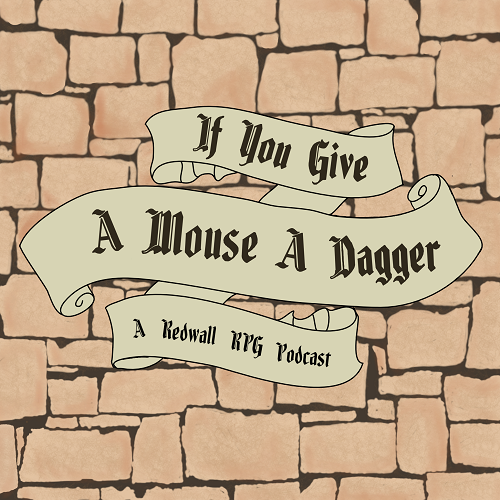
Lately, I’ve been in a Redwall mood. Most of my books are packed away in a box but when I’ve gotten a bit further in my retrospective project, I’m probably going to dig out my books from where they’re stored and curl up somewhere to read for a few weeks. There’s something charming about a setting made up of small woodland creatures having medieval-style adventures. It’s the sort of setting that lends itself well to Dungeons and Dragons style adventure games.
It also turns out that there’s still an active Redwall fandom online despite that there hasn’t been any more books released since Brian Jacques’ passing in 2011. This doesn’t really surprise me, considering the longevity of the Gargoyles, Lion King and Balto fandoms. Occasionally, these fandoms are rewarded for their patience and Redwall fans are no exception: there is an officially sanctioned Redwall video game series being released, although I don’t know how canon I would consider it.
I suppose it’s only natural that a fan would start up an “actual play” podcast in the Redwall setting, but what’s surprising is that it took until 2019 to do so.
The plot of If You Give A Mouse A Dagger is that there’s a sickness spreading through Mossflower, The Affliction, and it’s got no known cure. (Keep in mind this started a year before the Covid-19 epidemic.) There are rumours that, if one was able to find the long lost Redwall Abbey, there would be hope for Mossflower’s salvation.
So yeah. This takes place far in the future of the Redwall setting, but as far as I can tell from the episodes I’ve listened to thus far, there don’t seem to be any spoilers for the series. I also have some bad news: the upload schedule is all over the place, and the official website only has up to episode seven, so finding it on sites like Spotify is recommended.
Watership Down (2018)
Source: Netflix
Episodes: 4
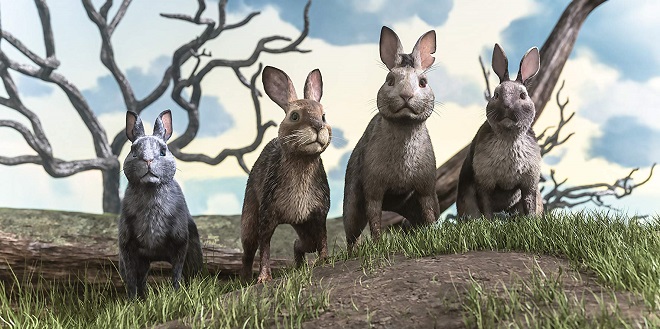
Of course, Redwall wasn’t lightning in a bottle. This type of story is written all the time, even if it’s mainly marketed towards the young adult market. But whether it’s Warriors by Erin Hunter, The Books of the Named by Clare Bell or The Blood Jaguar by Michael H. Payne, all of these stories likely owe a lot to the existence of one very famous, very important book that predated them all.
The Jungle Book.
After Rudyard Kipling came Felix Salten and his book Bambi. His book, unfortunately, is overshadowed by the Disney film of the same name. Fortunately for Richard Adams, author of Watership Down, the movie that was released based on his book didn’t have the same overwhelming advertising budget that a similar movie by Disney would’ve had, so unlike Bambi, both versions of Watership Down would seem to be allowed to co-exist. Later, an animated series based on the movie version was made and lasted for a couple years.
In recent years, everything old seems to be new again. There’s a new Lion King, a new Final Fantasy VII and in 2018, a new Watership Down. Like Disney’s CGI Lion King, BBC’s CGI Watership Down follows the same story as the book and the original hand drawn movie. The only reason to watch the new series is if you like the story and want to see how good a job the BBC did. I have some good news and some neutral news.
The good news is that, despite a running time that is exactly double that of the 1978 movie, the 2018 series doesn’t feel like it drags at all. Not a moment is wasted.
The neutral news depends on how attached to the book or the 1978 movie you are. There are ways in which each version tells the story differently and certain aspects of the plot are changed completely in the 2018 series, while others are a bit more developed than they were in the 1978 movie. Plus, the series uses a CGI style that tries to appear more realistic, but is very awkward and stilted in places and robs the rabbits of some of the range of expression they had in the 1978 movie. Notably, the cat and dog exist in the uncanny valley and it’s unusual for animal characters to find themselves there. The 2018 series is also noticeably bloodless. Not completely, but most of the blood isn’t shown outside of the most grievous of wounds. Rabbits will die without a single drop of blood being spilled, so the realism of the CGI look only goes so far.
That said, Watership Down is a beautifully told story that will move you to tears if you were to watch it. I’m also pleased to report that, despite the flaws I pointed out, I disagree with some of the flaws that everyone else noticed. Many would claim that they were unable to tell the rabbits apart and aside from fight scenes with numerous rabbits on the screen at once, it wasn’t hard to tell characters like Hazel, Fiver, Bigwig, Clover and Strawberry apart. I’ve also heard it told that the rabbits looked soulless, but I found that to not be completely true.
Despite its flaws, I wish there were more than four episodes made, but given that the author never really wrote a true sequel outside of a book of short stories, a second season is unlikely.
Angela Moseley
I’ve spent this week at home on vacation and it has been glorious. Fun fact, I nearly didn’t get this article finished because I was vacationing so hard.
Monster Hunter World: Iceborne, Full Bloom Fest (2020)
Source: PS4 (Capcom)
Episodes: It’s a video game!
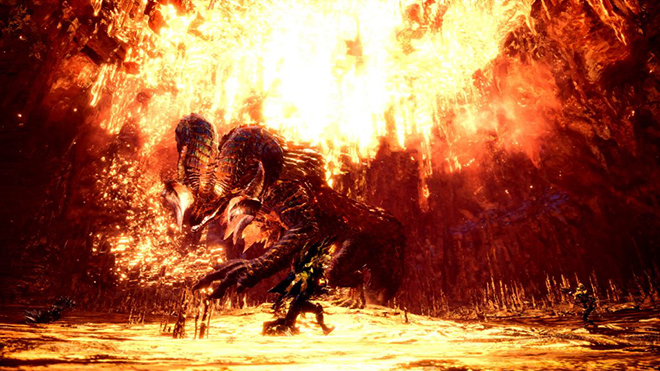
I’ve been plugging away at Monster Hunter World: Iceborne for months now. The game just has that much content. Normally, I work on getting weekly events done in order to gain items or money to improve my armor. Several times a year, Capcom introduces a festival. The base game World had them and Iceborne is continuing that tradition. In preparation for the Full Bloom Fest that ran from April 9 to May 7, I leveled up my hunter to Master Rank 100 so I could partake in the newer quests.
When April 9 rolled around, I ignored much of Final Fantasy VII Remake to enjoy the new Iceborne festival. I didn’t get to every event on my list, but some events won’t go away until completed at least once. The newly introduced monsters I fought were Raging Brachydios, Master Rank Kulve Taroth, and Arch Tempered Namielle.
Raging Brachydios was one of the most annoying creatures I’ve fought in some time. This dinosaur’s gimmick includes exploding slime. The Raging Brachy variant ups the ante with slime that drops whenever a slime-coated body part is struck. His fight consists of two stages. In stage one he’s free to roam the area, attacking as normal with new moves including exploding lines of slime that can track a hunter. The second stage has him lock hunters off in a volcanic region where escape is impossible. He coats the ground with all of his slime and creates huge explosions, but attacking him is actually easier because his body is no longer covered in slime. My first run of the fight ended in failure with each party member fainting at least once. (It doesn’t matter if you’re doing a solo or party hunt, each hunt only allows for three faints.) My rematch went a lot smoother as we only had a single faint in the fight (me).
Master Rank Kulve Taroth was a fight I repeated at least a dozen times before achieving a single win. In the base game, the fight with this giant gold-covered lizard is a siege event where you strive to break off her ram horns before she escapes. In Iceborne the siege is now a regular hunt, but she automatically escapes if you don’t pass hidden DPS checks. Her major attacks consists of crushing hunters with a rolling attack, blasting flames at them from her mouth, directing her fire beam to the floor to turn rock into lava, or directing her flames to the ceiling to have molten lava rain down. The majority of my hunts saw Kulve Taroth running away. Other times, hunters fainted because they didn’t upgrade their armor to withstand her fire attacks. My sole winning match against his beast was finally won because we dished out enough damage during the fight and no one fainted.
Arch Tempered Namielle was the final monster I hunted during the Full Bloom Fest. Namielle is best described as a mix between a quadruped dragon, a squid, and a catfish. Arch tempered monsters hit harder and have more HP than their non-tempered versions. This fight was actually more successful than the other special monsters. I won my first fight against her with random hunters. Unfortunately, subsequent fights with other random hunters were a disaster as they were washed away by her water attacks or blasted by her electric attacks. Again, building for defense and elemental resistance is something a lot of people seem to neglect in this game. After I started playing with friends instead of random players, I won all of my fights against her.
I have yet to take on Furious Rajang, but fortunately his event isn’t going away until I complete it at least once.
Psycho-Pass, Season 3 (2019)
Source: Amazon Prime
Episodes: 8
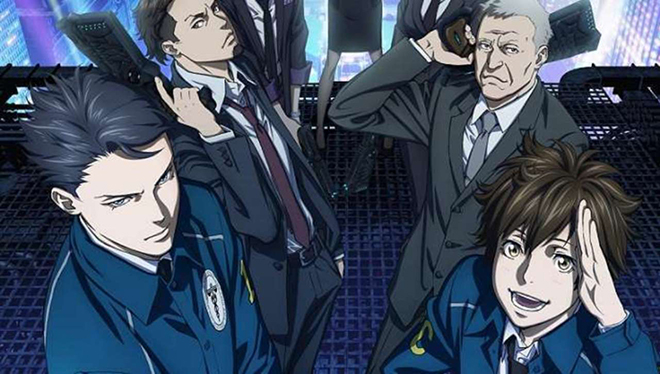
After the disappointment of Psycho-Pass, season two I fell out of the loop on the series as a whole. I didn’t hate the second season as much as some fans, but it wasn’t the same without Gen Urobuchi onboard as the series composer and main script writer. He was replaced by Tow Ubukata in seasons two and three. At the very least director Naoyoshi Shitani and script writer Makoto Fukami have stayed on across the entire series. It also helps that Production I.G. has remained the animation studio for the past eight years. Starting season three without having watched the first Psycho-Pass movie or the Psycho-Pass: Sinners of the System trilogy of movies meant that some events were confusing. Otherwise, season three was easy enough to follow.
Season three takes place eight years after the events of season one and six years after the events of season two. Akane Tsunemori is no longer an Inspector with Division 1 of the Ministry of Welfare’s Public Safety Bureau. She’s been imprisoned by the super computer responsible for running all aspects of society, Sybil. Additionally, much of Division 1’s original members have moved on except for Sho Hinakawa and Shion Karanomori. Division 1’s new inspectors (think of them as detectives) are longtime friends Arata Shindo and Kei Mikhail Ignatov. The new enforcers (enforcement officers) are Tenma Todoroki, Mao Kisaragi, and Kazumichi Irie. Leading the MWPSB as chief is former inspector Mika Shimotsuki. Thanks to past events, society in Japan is rapidly changing as immigration expands including anti-immigrant sentiments, political forces aiming to take control of the governorship, and a system pulling the strings behind the scenes with power that equals Sybil.
The first half of season three consists of stand-alone investigations, where inspectors Shindo and Ignatov along with their enforcers are trying to get a handle on the larger picture. Shindo calls himself a mentalist and has the ability to retrace a victim’s final actions before they died. It isn’t long before Division 1 uncovers a plot by religious leaders tied to the immigration cause all at the service of a power-hungry group united by the system known as Bifrost. To be honest, all of the replacement characters are entertaining, so much so that I found myself not missing the main Division 1 cast from previous seasons. Shindo is a likable replacement for Tsunemori, even if he strikes me as shady as times. Ignatov is an enjoyable contrast to Shindo, as he’s the more level-headed one of the pair. Together they’re extremely competent detectives. The new enforcers are a welcome change as hot heads Irie and Todoroki pair well with the inspectors. Though I would love to know how the once whiny Mika Shimotsuki became chief, especially since she was a bratty inspector in season two and a regular civilian in season one.
Content-wise, season three isn’t as ground-breaking or thoughtful in tackling societal commentary as season one. While some cases gave me a good chuckle like Psycho-Pass taking a moment to explain collateralized debt obligation and subprime lending, the lack of depth hurt. For the most part, this season played out like a standard crime drama within the Psycho-Pass world. Villains only acted in the interest of consolidating or gaining power over society while playing a life-sized game of chess. Thinking about it, these villains’ motivations were a step down from the villain’s goal in season two, which was a downgrade from season one. Rote villain motivations aside, this was still an entertaining show. If you’re heavily invested in Psycho-Pass season three is more of the same. If you’re looking for the philosophically heavy themes from season one this show will disappoint.
All Dogs Go to Heaven (1989)
Source: DVD
Episodes: 1 Movie
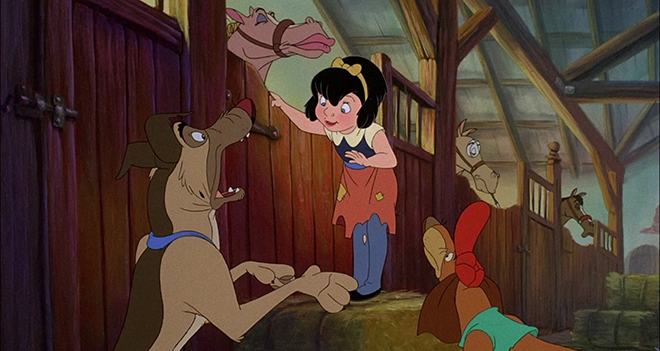
All Dogs Go to Heaven was a movie I actually saw around the time it released in 1989. Seeing it when I was about five years old versus more than 31 years after release is a very different experience. ADGTH was one of Don Bluth’s earliest films, produced a few years after he left Disney to direct and produce his own animated movies. The film was conceived shortly after Bluth finished The Secret of NIMH. ADGTH wasn’t as successful in the box office as An American Tail or The Land Before Time because it released around the same time as Disney’s The Little Mermaid. Still, it was successful enough on VHS to receive a sequel, a TV series, and direct-to-video Christmas movie.
Charlie B. Barkin is a German Shepard mix who escapes from being locked up in the pound with his best friend a Dachshund named Itchy Itchiford. The duo returns to a casino riverboat run by Charlie’s business partner, Carface Caruthers. Charlie and Carface can’t agree on how to run the casino, so he convinces Charlie to leave town with half of the current earnings since it was a 50/50 profit split. Carface was the one responsible for having Charlie locked up, so the natural escalation of his plan is murder. He gets the German Shepard drunk on a pier and knocks him into the water by using a runaway car. The murder is successful as Charlie wakes up in Heaven. However, he can’t accept being dead so he escapes back to Earth. Once back he learns that Carface’s casino is successful because the Bulldog kidnapped a young orphan girl named Anne-Marie who has the ability to talk to all animals. He uses her to find out which animals will win races. Charlie and Itchy trick her into working for them and create their own business empire. It’s all fun and games until Carface finds out, destroys Charlie’s casino, takes back Anne-Marie, and Charlie has to choose between saving the girl or his own life.
The very premise of All Dogs Go to Heaven is an interesting one. The entire reason dogs go to Heaven is because they’re naturally perceived to be good. However, our protagonist Charlie (voiced by the late Burt Reynolds) is scum. The majority of this movie is about a dog who is affable, but is nearly as greedy as his former business partner. I don’t know how Carface managed get him locked up, but I’m sure he deserved it. Not only does Charlie not do the right thing after hearing about Anne-Marie’s plight by finding someone to adopt her, he emotionally manipulates her when she has a shot at happiness. The only difference between Charlie and Carface is that in the end, Charlie realizes how awful he’s been to the girl and earns his post-death redemption by saving her life at the cost of his own.
Don Bluth’s art style and the depiction of New Orleans in 1939 are both colorful and gritty. This film also encapsulates the dark nature of animation in the 1980s as violence and religious depictions made it past censorship. One scene I remember well from a child is when Charlie dreamed about being dragged down to Hell complete with a lake of fire and gremlins trying to eat him alive. Another scene is him being gunned down and surviving. Then there was his actual death. These dark adventures are an aesthetic I occasionally miss in modern movies. All Dogs Go to Heaven is still a great movie and will tickle your nostalgia bones.
As mentioned above: The best way to stop the continued spread of the coronavirus or a possible resurgence is to stay at home as much as possible. We, basically need to engage in quarantine control, which means we’ll be back next week. Stay safe out there.





